
views
- Check for symptoms like elevated thirst or needing to urinate more often than usual, which are signs of irregular blood sugar.
- Note any sudden weight loss that occurs without any change in exercise or eating habits, or a sudden increase in hunger.
- Monitor any unusual fatigue or irritability, and see a doctor if your vision becomes blurred.
Watching for Symptoms
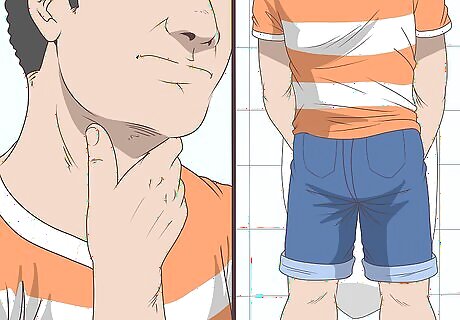
Notice if you need to drink water and urinate more often. Typically, if your blood sugar is out of control, you will feel thirsty constantly. You may be able to down a pitcher of water or tea without even thinking about it, for instance, when normally you'd only drink a glass or two. When the sugar concentration is high in your blood, your kidneys can't pull the sugar out anymore. Your body tries to dilute that sugar by pulling in more water from your tissues, leaving you feeling dehydrated. This makes you feel the urge to drink more water, resulting in you urinating more often.
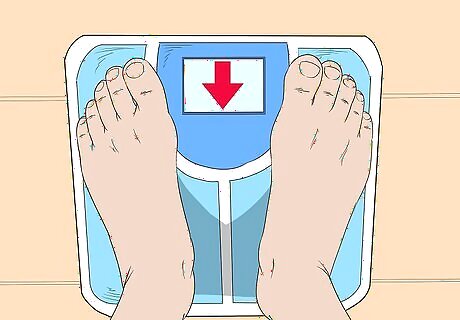
Pay attention to sudden weight loss. If you're trying to lose weight, dropping pounds isn't a bad thing. However, if you haven't changed your eating or exercising habits recently, suddenly losing weight can be an indicator of diabetes. With type 2 diabetes, your insulin has trouble getting sugar from your blood for energy. Therefore, it starts drawing from your fat and muscle reserves for energy, causing you to lose weight. Keep in mind that not all early diabetics will lose weight. You may gain weight or see no change in your weight, even though you have diabetes.

Check to see if you're extra hungry. Uncontrolled diabetes can also cause extreme hunger. You may find yourself wanting to snack all the time and in large quantities. At the same time, you may still be losing weight. Typically, this is because your body is having trouble drawing energy from the glucose in your blood, so it's making you want to eat more.

Look for slow healing times and a higher number of infections. With diabetes, you'll have more trouble healing cuts than you normally do. For instance, you may notice that a cut just doesn't seem to be healing over, even after a week or two. You might also get gum or skin infections more often, as well as genital itching caused by fungus or sugar in your urine. Unstable glucose levels can affect your blood circulation, which is why healing takes longer.

Watch for fatigue and irritability. Uncontrolled blood sugar levels can make you feel tired all the time. This isn't just feeling tired after a long day of work; rather, it's a tiredness that you can't seem to shake no matter how much rest you get. Irritability is a related symptom, as not feeling yourself can make you irritable. Because unstable blood sugar can reduce your circulation, your blood can't get energy and oxygen to your cells.
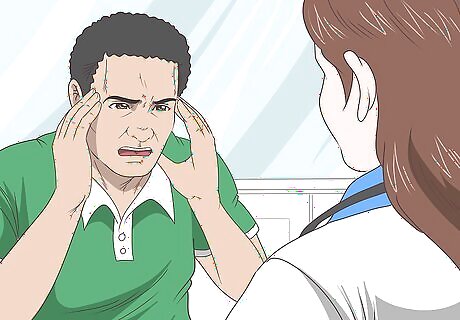
See a doctor if you have blurred vision. High blood sugar levels may cause changes in your eyes, leading to blurred vision. This symptom may go away if you get your blood sugar under control, but you definitely need to see a doctor. If you experience blurred vision, visit your doctor immediately for a medical evaluation.
Checking Your Blood Sugar
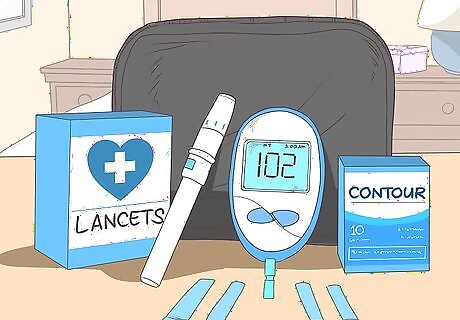
Purchase a glucose testing kit. You can find these at pharmacies or most big box stores. You will also need matching testing strips to go with your monitor, so make sure your kit has some or purchase some separately. You may also need to purchase needle tips for your lancing device if the kit doesn't have them. Check to see if the kit needs batteries or has them already. Keep in mind that some kits may require a prescription, and they may be expensive without one. However, they're available over-the-counter in some areas for as low as $10.
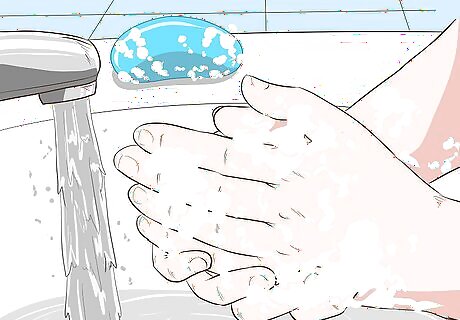
Wash your hands with warm soap and water. You need to prick your skin, and you don't want to introduce bacteria. Wash your hands for at least 20 seconds before rinsing off the soap completely. Dry your hands well on a clean towel. If you're not near a place where you can wash your hands, use hand sanitizer or rub your finger with a rubbing alcohol wipe.
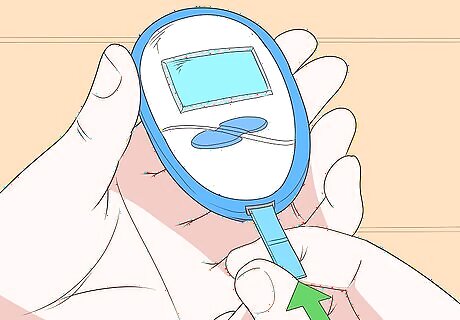
Insert a testing strip into the glucose monitor. The strip should indicate which way it goes in the monitor. If you're not sure how to do it, read the instructions that came with your monitor. Some older glucose monitors may require that you place a drop of blood on the strip before pushing it into the machine. Typically, inserting the strip will turn on the monitor. However, you may need to put in batteries first.
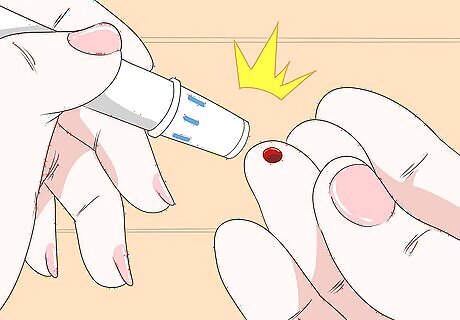
Lance your finger to draw up a drop of blood. Pull the top of the lancet up, loading the spring. Place the lancing device flat against the side of your fingertip, then press the button to let the spring go. It will prick your finger. If it didn't come preloaded, you may need to put a needle in the tip of your lancing device. It should have at least 1 needle with it.
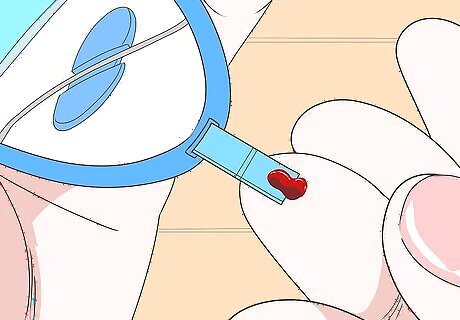
Place the drop of blood on the testing strip. The needle should prick your finger hard enough to bring up blood. Touch the blood to the end of the testing strip and hold your finger there. If you didn't get enough blood, squeeze down your finger towards the tip to help draw up blood.
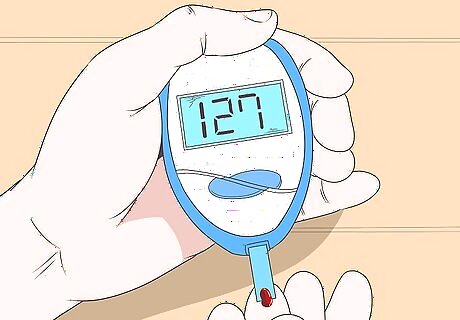
Wait for the result. Hold the tip of your finger on the strip until the monitor gives you a reading. It should only take a few seconds for a reading to pop up on the screen. If it takes longer than a minute, you may have done something wrong. Go back and read the instructions for your monitor to see if you need to do something differently.
Trying an A1C Test
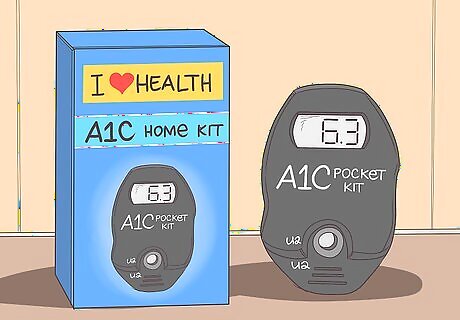
Purchase an A1C test kit at a pharmacy. Your A1C level is a measurement of your blood sugar levels over the past 2-3 months. Your doctor can measure this level for you, but you can also use an at-home kit to get a relatively accurate reading. The kits range from $50 to $150 USD. Your insurance may cover the cost of this kit if your doctor prescribes it.
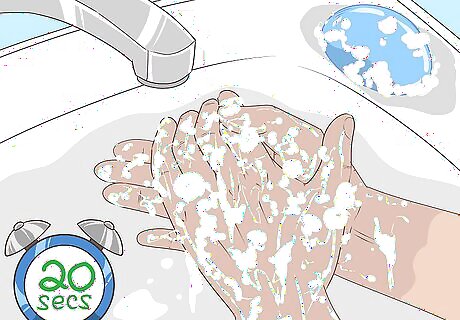
Wash your hands with warm water and soap. Since you'll be lancing your finger, you want to keep bacteria to a minimum. Scrub your hands for at least 20 seconds before rinsing the soap off. If you can't wash your hands, use hand sanitizer or wipe your finger with a rubbing alcohol wipe.
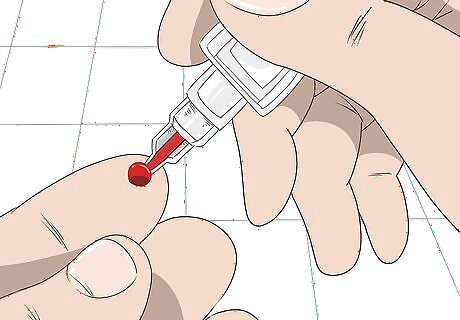
Prick your finger with the lancet to draw a drop of blood. Lift up on the loading mechanism at the top of the lancet. Set the tip of the lancet flat against the side of your finger near the tip. Push the button to release the spring, and the lancet will stick your finger with a small needle. Always read the instructions for your A1C kit first, as it may differ from kit to kit.
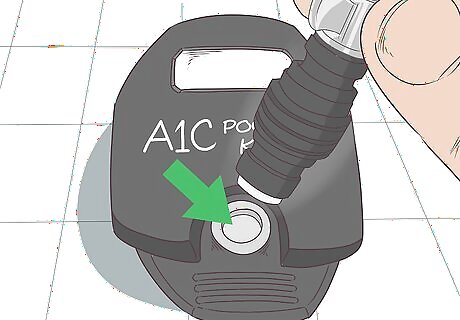
Drop the blood onto the strip or into the solution. Kits can vary, so you may need to put the drop of blood on the end of a strip or you may need to drop it into a solution. Either way, you will need the blood to get a reading. If you're having trouble getting blood, squeeze down the length of your finger towards the place where you pricked it.
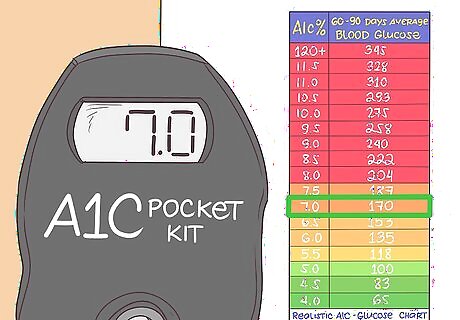
Read the results or mail in the kit. With some kits, you will compare the color of the solution to a chart to get your results. With other kits, you will get a reading from a monitor, much like a glucose monitor. In other cases, you will need to mail in the kit to learn your results.
Weighing Your Risk Factors
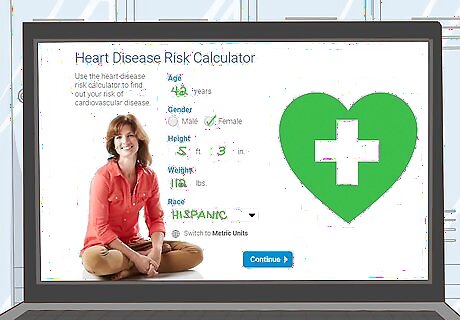
Take an online risk factor assessment. You can find these tests from many reputable medical websites. They will ask you a series of questions, and then they will tell your level of risk for having diabetes or developing it in the future. For instance, try the one here: https://www.diabetes.ca/about-diabetes/take-the-test.

Consider your age a factor if you're over 45. People over 45 are more likely to develop type 2 diabetes than people under 45. As you age, make sure to monitor your health closely. However, age is just one of many risk factors. Being over 45 doesn't automatically mean you'll develop diabetes.

Watch your health if you belong to certain minority groups. You're at higher risk if you're of Asian, African, Hispanic, or Native American ancestry. If you're worried about your health, talk to your doctor about how you can reduce your risk.

Monitor your health closely if diabetes runs in your family. If people in your family have diabetes, you're more likely to develop it. That's particularly true if the person is a parent or sibling. Of course, you can't change genetics, but you should be aware that it puts you at higher risk. While you can't change your genes, you can take steps to lower other risk factors.

Be aware that other health conditions can put you at risk. If you had gestational diabetes, you're at a higher risk to develop type 2 diabetes later. Similarly, polycystic ovary syndrome also puts you at risk. While you can't change these conditions, you can work to lower other risk factors.
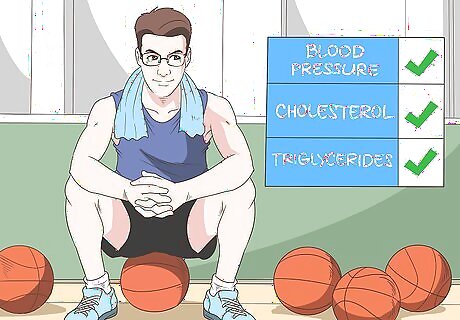
Watch your blood pressure, cholesterol, and triglycerides. If you have high blood pressure, cholesterol, and triglycerides, you are at higher risk for diabetes. The good news is you can take steps to lower these numbers and decrease your risk. Losing weight, eating a healthy diet, and increasing your daily activity level can all help with these issues. If your numbers are still high, talk to your doctor about medications to help lower these numbers.

Eat a healthy diet to help lose weight. Excess weight can put you at risk for diabetes over time. By eating a healthy diet rich in veggies, fruits, lean proteins, and whole grains, you'll increase your overall health and work on losing those extra pounds. If you're not sure how to eat a healthy diet, talk with a nutritionist. Work on limiting sugars and fats to lower your overall caloric intake.

Exercise for 30 minutes most days of the week. Inactivity can put you at higher risk for diabetes. To help combat that, try to work exercise into your weekly routines. Aim for 150 minutes a week of exercise. You don't have to hit the gym to get in your exercise. Try going for a walk at lunch, taking the stairs instead of the elevator, and parking as far as you can in the parking lot to increase your daily activity. If you don't like a treadmill, try other activities. You can swim, bike, play tennis, hit the basketball courts, hike, or even garden. Anything that gets you moving and works up a sweat counts. Exercise is important for preventing diabetes because it makes your body use up glucose in your blood and it increases your insulin sensitivity. Plus, it helps keep your weight in check.
When to Seek Medical Care
Talk to your doctor if you think you might have diabetes. Try not to worry, but diabetes is a serious medical condition. Without treatment, it can cause complications that can harm your health. Fortunately, you can treat diabetes and possibly prevent further health issues. Visit your doctor to discuss your concerns and find out if you need treatment. You should always discuss your diabetes concerns with your doctor, even if your home tests come back normal. They’ll make sure nothing is wrong.

See a doctor if your blood sugar is consistently over 200 milligrams/deciliter. Whether you've eaten recently or not, a blood sugar level higher than 200 mg/dL may indicate you could have diabetes. However, it's normal to occasionally have a high reading, especially after you've just eaten. Take several readings over the course of a week to determine if your blood sugar is consistently high. If your readings are high, your doctor can run further tests to figure out if you have diabetes. Don't assume that you have diabetes after 1 reading. Take several readings at different times of the day for at least a week. Record all of the readings so you can look for trends. Certain foods, such as candy and alcohol, can cause higher blood sugar readings right after you've consumed them. If you take your blood sugar before you eat breakfast in the morning (and you haven't eaten in 8 hours), see your doctor if your blood sugar is over 100 mg/dL, which may indicate pre-diabetes. However, this reading could be artificially high if you had a big dinner or a lot of alcohol the night before.
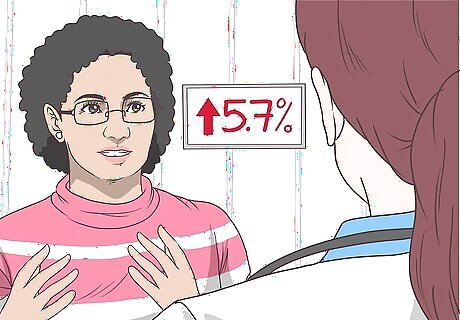
Visit your doctor if your A1C results are above 5.7 percent. While it's not necessarily conclusive that you have diabetes, you may be in prediabetes if your A1C is above 5.7 percent. You may have diabetes if your A1C is above 6.4 percent. However, you should always talk to a doctor for further diagnosis. Certain conditions can make your A1C read falsely high or low. For instance, if you have a chronic bleeding disorder, that can lead to falsely low readings.
Treat your diabetes as directed by your doctor, if you have it. Untreated diabetes can cause serious complications, so listen to your doctor’s treatment advice. With type 1 diabetes, you’ll always need to take insulin because your body doesn’t make it. Type 1 requires immediate treatment, as blood sugar levels can rise to dangerously high levels quickly. Additionally, you may need lifestyle changes. For type 2 diabetes, your doctor will likely recommend a combination of diet and lifestyle changes, and potentially medication. You’ll need to monitor your blood sugar daily to make sure it’s under control. You may take insulin or oral medications to help manage your blood sugar. You may be able to help control your blood sugar with daily exercise and a healthy diet. In rare cases, you might get a pancreas transplant to treat Type 1 diabetes. There are also rarer types like type 1.5 and MODY. Ensure you get tests to rule out type 1 (e.g. autoantibodies), and it is worth getting tested for these additional types to optimize your treatment. When in doubt, consult an endocrinologist, as many specialize in diabetes treatment.




















Comments
0 comment